
Source: DeFiLlama(Pump.fun)
The crypto industry has witnessed a frenzy on memecoins since the beginning of this year, marking what many call a “memecoin super cycle”. The scale of this movement is evident in the success of Pump.fun, a memecoin launchpad that generates over $1 million in revenue and facilitates a launch of 20,000 tokens on a daily basis. Solana has emerged as the epicenter of this memecoin revolution, with its DEX trading volume now exceeding that of Ethereum and other major chains. This surge in activity is further reflected in the remarkable success of Phantom wallet, which at its peak reached 700 million MAUs.
The impact of memecoins extends far beyond just capturing the imagination of crypto enthusiasts - they've become the most powerful gateway for introducing newcomers to the crypto. Yet, this success comes with its share of skepticism. Critics argue that memecoins are merely for speculation, pointing to their high volatility and apparent lack of intrinsic value. This has sparked an important question in the crypto community: How should we truly understand and assess the value of memecoins in today's market?
In the crypto ecosystem, a token's value is composed of 3 major components:
Store of Value: Similar to gold or Bitcoin, tokens can function as a hedge against inflation, preserving purchasing power over time. This represents the most fundamental yet challenging form of value to achieve, as it requires widespread trust and consensus among users.
Cash Flow and Transaction Demand: This value stems from practical utility - whether through transaction fees (as seen with ETH and SOL), revenue from fee collection (as in DeFi tokens), or value-accrual mechanisms like token burns. Much like traditional stocks, these tokens can be evaluated based on their business model and ability to generate sustainable cash flows.
Meme, Narrative, and Attention Value: This component is driven by community interest and engagement. In the crypto market, a project's ability to capture attention and build a strong community often becomes a crucial value driver. The narrative can range from technological innovation to financial infra, and increasingly, cultural and social elements as seen with memecoins.
It's important to note that these components aren't mutually exclusive. Tokens typically embody a unique mix of all three elements, and this balance can shift as the project matures and evolves. Here are some notable examples that illustrate how these value components manifest in practice:
Bitcoin: Embodies all three value components, though it's primarily recognized for its store of value properties. Beyond this, it serves practical purposes in payments and cross-border transfers, while maintaining a devoted community of Bitcoin maximalists who strengthen its cultural significance.
Ethereum/Solana: Both derive their value primarily from being essential currencies for transactions and operations on the network, where increased network activity directly drives token demand. Their established economic presence and network effects have also helped them evolve into reliable stores of value.
Dogecoin: While it originated as a meme-driven token, it has evolved beyond its initial appeal. Through its dedicated community and sustained relevance, it has achieved a level of stability that allows it to function as a store of value for its loyal holder base.
Bonk: Beginning as a meme token within the Solana ecosystem, it has expanded its utility through various applications like BonkBot and Moonwalk. This evolution has helped it develop sustainable value through genuine transaction demand and value accrual.
Among the thousands of existing tokens, fewer than 20 protocols may have earned genuine recognition as stable stores of value or achieved the market fit necessary to generate consistent demand. The vast majority of tokens in circulation primarily derive their market value from the third component - their meme status, narrative strength, and ability to capture market attention.
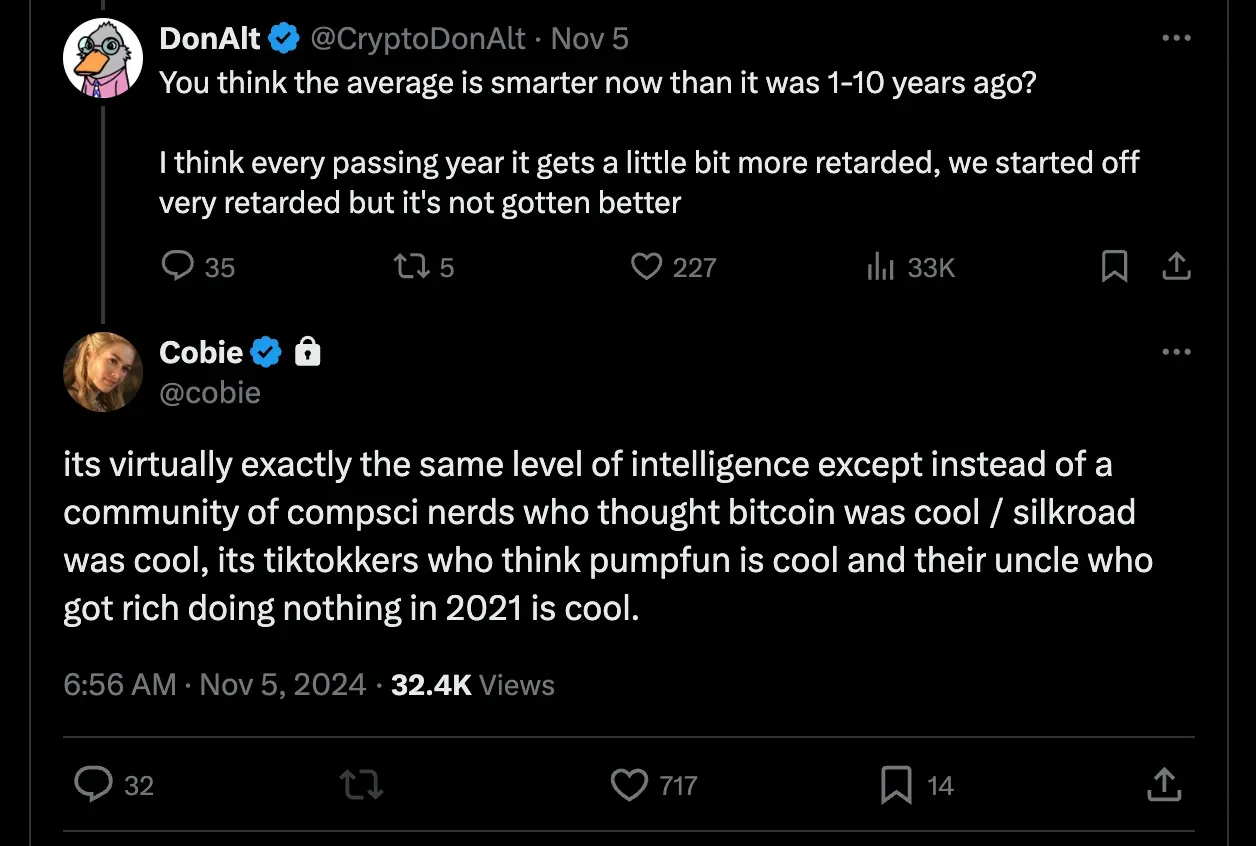
Source: X(@cobie)
As we discussed above, the underlying factors that determine memecoin value share fundamental similarities with other crypto tokens. Except for practical utility including payments and transfers with stablecoins, crypto's true potential lies in the concept of tokenization itself. At its core, crypto excels at transforming community engagement and cultural value into tangible economic value, creating new markets, and building incentive-driven networks and communities.
This is why other crypto infrastructure or platforms exist at first - from DeFi protocols like Uniswap and Jupiter to middleware solutions like oracles and restaking, and even fundamental infrastructure like rollups and DA layers. They all serve to facilitate token-based economic activities and interactions around it.
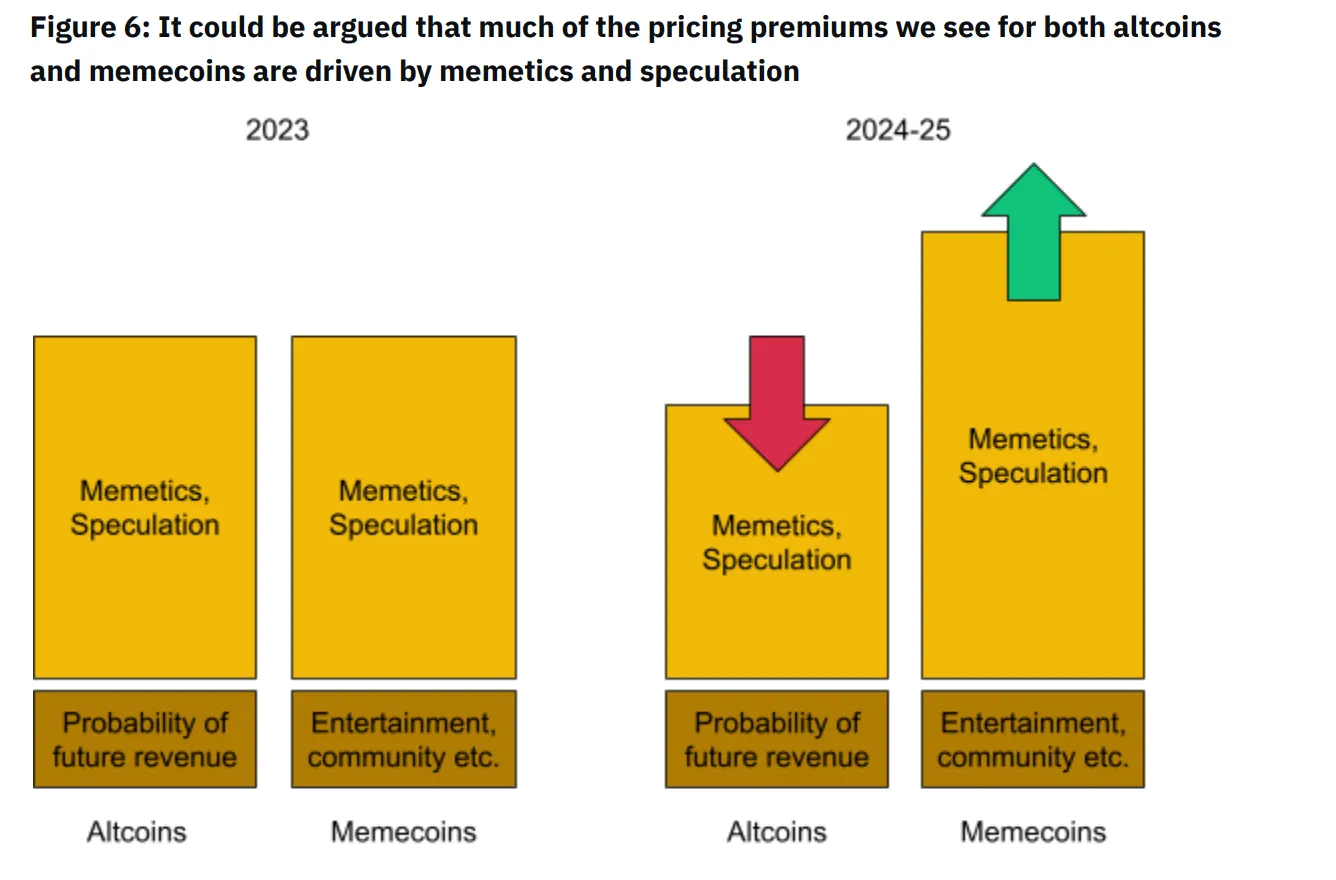
Source: Understanding the Rise of Memecoins
Most infrastructure and DeFi projects emphasize technology and financial innovation through their tokens, yet their value primarily stems from narratives and attention economics rather than functioning as stores of value or cash flow generators. What distinguishes memecoins is their deliberate shift away from these traditional narrative game of crypto, instead embracing the fundamental values of community and entertainment. In doing so, they offer a satirical viewpoint on the limitations of VC and insider-driven markets and their often superficial claims of utility.
“In the short run, the market is a voting machine but in the long run, it is a weighing machine.”
Benjamin Graham
Market events and investor sentiment drive short-term price movements, but over time, assets generally find their way to their true fundamental value. This principle isn't unique to stocks - it applies across all assets, including physical assets, tokens, and memecoins.
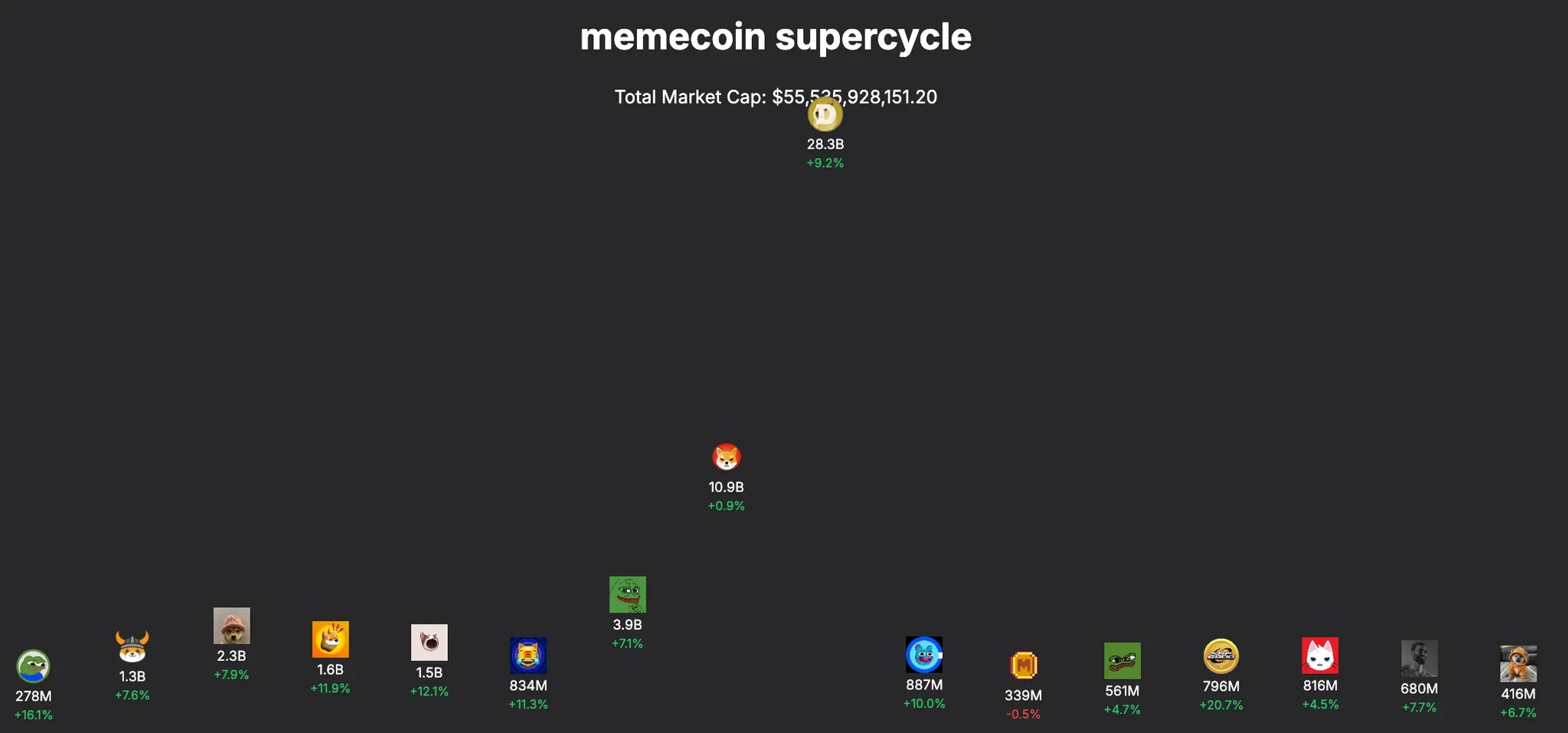
Source: memecoinrace.xyz
Yes, memecoins show more volatility and react more strongly to market events than other assets. But their success or failure can't be explained by short-term trading and speculation alone. Out of thousands of memecoins, only a handful have managed to build lasting communities and maintain their value. The rest typically vanish shortly after their initial hype fades.
What makes this difference? The key is understanding that memecoins are more than just speculative tools - they're tokenized expressions of community and cultural value. To better understand this, let's look at three key factors that contribute to the value of memecoins, or more generally, memetic value of tokens:
Background and Narratives
A powerful origin story and compelling narrative are crucial elements that drive a memecoin's initial success. Being analogous to genes, memes spread through replication and evolution - but among the countless memes that emerge, only those with truly powerful narratives manage to gain influence and contagious power.
The most successful memecoins have an exceptional ability to read the market and tap into what captures people's attention. PEPE launches during the crypto market's dark days in early 2023, it brought much-needed humor and lightness that helped shift market sentiment and sparked a broader memecoin renaissance. BONK emerged as a beacon of hope in the Solana ecosystem after FTX's collapse, embodying both resistance against centralized power and the community's resilience. More recently, GOAT carved out its own unique position by building its narrative around being an AI-powered memecoin backed by Marc Andreessen.
What sets these successful memecoins apart isn't just their entertainment value - it's their ability to craft narratives that resonate with market sentiments and capture public imagination through compelling storytelling.
Influential figures often play a pivotal role in shaping a memecoin's narrative and success. Take DOGE with Elon Musk, WIF with Ansem, or SPX with Murad. These key figures become more than just advocates; they transform into community pillars who both champion the token’s growth and shape its fundamental vision and values.
However, even the most compelling narrative and strongest leadership don't guarantee lasting success. Look at early 2024's memecoin super cycle - the vast majority of launches, despite initial excitement, quickly faded into irrelevance. While initial hype and FOMO might drive prices up temporarily, what often follows is predictable: once momentum stalls, it turns into a desperate race to the exit, with holders rushing to sell before others, typically ending with the token's value plummeting to zero. This boom-and-bust cycle has become an all too familiar pattern in the memecoin space.
Community and Brand
In "Sapiens", Yuval Harari identifies one of humanity's defining features: our ability to believe in fiction. Our collective belief in abstract concepts like nations, corporations, and religions has made large-scale social cooperation possible. These fictions become more powerful and real as more people believe in them. Memes and communities function in much the same way. They spread through the most viral forms of ideas - fun and culture - and as more people participate, they develop powerful network effects and genuine cultural value.

Source: Milady Maker
For a memecoin to transform its initial buzz and capital into true success - sustainable value - it must build strong community and brand foundations. Tokens like Bonk and WIF, along with NFTs like Pudgy Penguins, CryptoPunk, and Milady, have evolved beyond simple memes into cultural symbols and established brands. Just as luxury and fashion brands represent certain lifestyles and values, these digital assets give their holders a unique identity and sense of belonging. When people hold these tokens and participate in their communities, they're not just speculating - they're engaging in a new form of cultural consumption.
What makes crypto communities unique compared to traditional brands or cultural groups is how they blend cultural value with economic incentives. Take Degen for example - it directly rewarded content creation and social engagement in the early Farcaster community. Participants aren't just consumers; they're active value creators. This creates a positive feedback loop where earlier and more active participation leads to greater rewards, encouraging both early adoption and long-term community loyalty.
Organic Growth and Fairness
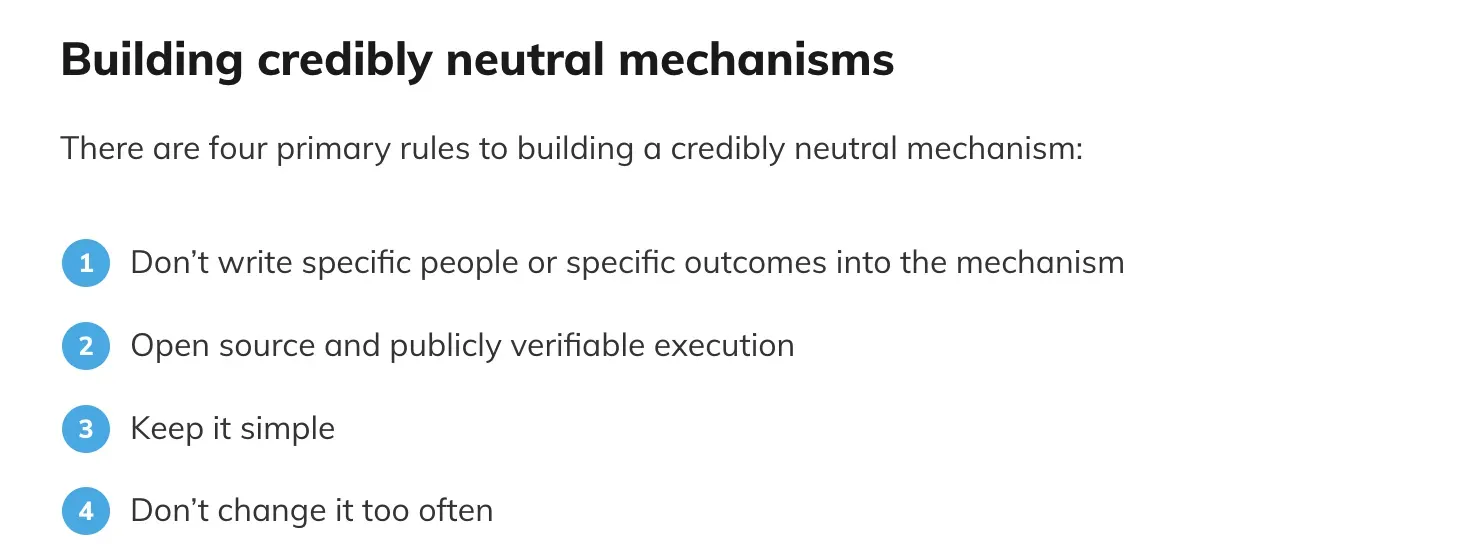
Source: Credible Neutrality As A Guiding Principle
Decentralization isn't just essential for blockchain networks - it's a fundamental requirement for memecoins to build organic communities. This aligns with what Vitalik Buterin calls 'credible neutrality'. People are highly sensitive to discriminatory conditions or benefits that favor specific groups or individuals. Using Vitalik's example: while people become outraged when social media platforms censor specific political ideologies or content, they don't complain when food delivery apps filter out poorly-rated restaurants.
As previously explained, a memecoin's true value depends on how many people resonate with and want to participate in its meme culture and community. Therefore, organic growth and fairness aren't just moral imperatives - they're practical necessities. How fairly and transparently a token launches and distributes itself becomes a crucial criterion for gaining people's trust and motivating their participation.
This is especially critical for memecoins, where community participation is central. Behind the success of launchpads like Pump.fun lies not only their ability to lower barriers for token issuance but also their response to market demands for fairness and transparency in early-stage token investments.
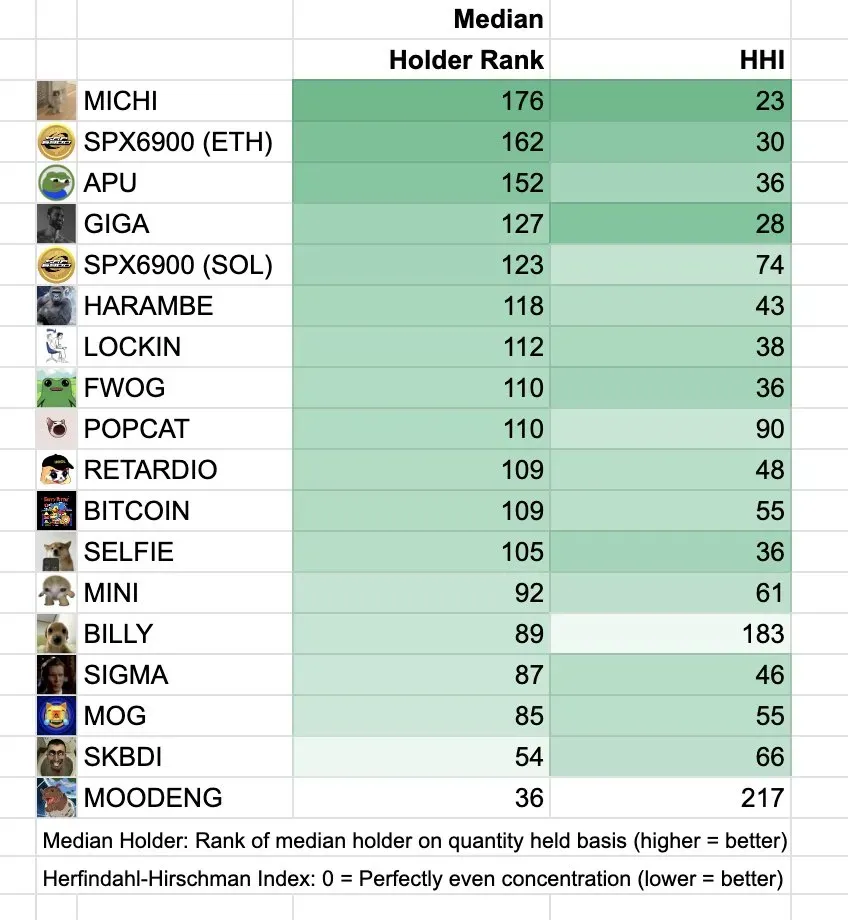
Source: X(@MustStopMurad)
The demand for fairness and organic growth can be measured through quantitative indicators of token community health. Murad, who emphasizes the community aspects of memecoins, highlights metrics like median holder rank and the HHI (Herfindahl-Hirschman Index) to evaluate fair token distribution and holder loyalty. The HHI, originally designed to measure market monopolization, is used to determine how concentrated a token's holdings are among its holders.
Those still skeptical of Web3 and crypto might view blockchain and tokens as mere vehicles for gambling and speculation. However, beneath this surface lies an ideology aimed at building decentralization, better financial systems, and a new internet structure. Whether well-intentioned or not, speculative demand has undeniably served as a powerful catalyst for this industry's birth and growth. After numerous trials and errors, we've reached a stage where prediction markets could replace traditional media, stablecoins are gaining attention as next-generation payment networks, and blockchain applications are becoming accessible to everyone.
Memecoins, too, carry deeper implications beneath their seemingly worthless and unsound exterior of gambling and speculation - they represent the fusion of tokens, community, and culture. Memecoins embody the purest form of crypto ecosystem's ideals of decentralization and fairness. They demonstrate that sustainable value can be created through community participation and transparent operations alone, without complex technology or financial products. This suggests possibilities beyond mere speculative frenzy, pointing toward new forms of social networks and services that blockchain technology could enable.
Many more memecoins will continue to emerge and fade away. Through these cycles of innovation and failure, we're gradually uncovering what makes digital communities thrive and how token economies can better align with human behavior and social dynamics. This ongoing evolution, despite its volatile nature, is steadily leading us toward more sophisticated and sustainable models of community-driven value creation in the digital age.
Dive into 'Narratives' that will be important in the next year